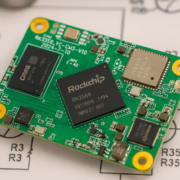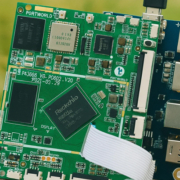What is a SoC Board?
In the world of embedded systems, smart home devices, and IoT products, the term SoC board is becoming increasingly common. But what exactly is a SoC board, and why is it so important in modern electronics?
Whether you’re a tech enthusiast, developer, or business looking to create intelligent products, understanding the basics of SoC boards is crucial. In this article, we’ll explore what a SoC board is, how it works, and where it fits into the future of smart technology.
What Does SoC Stand For?
SoC stands for System on Chip.
Unlike traditional computers or microcontroller boards where the CPU, memory, storage, and other components are separate, a System on Chip integrates most of these elements into a single chip. That means one compact piece of silicon contains:
- CPU (Central Processing Unit)
- GPU (Graphics Processing Unit)
- RAM (Random Access Memory)
- Storage (Flash memory or eMMC)
- I/O interfaces (USB, HDMI, UART, GPIO, etc.)
- Wireless modules (Wi-Fi, Bluetooth, Zigbee—optional)
What Is a SoC Board?
A SoC board refers to a printed circuit board (PCB) that includes a System on Chip as its core processing unit. The board typically features:
- Power regulation circuits
- Interface ports (Ethernet, USB, HDMI)
- Connectors for display, cameras, and sensors
- Optional expansion headers (GPIO, UART, SPI, I2C)
- Pre-installed firmware or operating system (Android, Linux, RTOS)
In short, a SoC board is a compact, ready-to-integrate computing module, perfect for embedded applications like smart home devices, kiosks, control panels, and industrial automation systems.
- Key Advantages of SoC Boards
- Compact & Integrated Design
- Because the entire system is on one chip, SoC boards are significantly smaller and more power-efficient than traditional multi-chip systems.
- Lower Power Consumption
- Ideal for IoT and portable devices, SoCs consume far less energy while maintaining performance.
- Cost-Effective
- Fewer components mean simpler designs, reduced BOM costs, and faster manufacturing cycles.
- Performance Optimization
- SoCs are often tailored for specific tasks (e.g., multimedia, AI, networking), allowing for faster boot times and efficient processing.
SoC Boards in Smart Home Applications
SoC boards are at the heart of most modern smart home devices, including:
- Smart control panels
- Smart speakers and displays
- Home gateways and automation hubs
- Smart thermostats and lighting controllers
- Surveillance and access control systems
Real-World Example: Portworld’s PortPi SoC Board
Portworld, a leader in smart home control panel solutions, offers its own Android-based PortPi SoC board designed specifically for:
- Smart home control panels
- Wall-mounted touch screen interfaces
- Commercial automation and B2B customization
PortPi integrates an efficient quad-core ARM processor with RS485, Zigbee, Wi-Fi, and PoE—making it a turnkey hardware foundation for intelligent living environments. It supports OEM/ODM customization, pre-loaded smart home software, and SKD/CKD formats for global manufacturing.
SoC vs. Traditional Microcontroller Boards
| Feature | SoC Board | Microcontroller Board |
|---|---|---|
| Processing Power | High (multicore CPUs) | Low to medium |
| OS Support | Android, Linux | Bare-metal or RTOS |
| Multimedia Capabilities | Yes (HDMI, camera, GPU) | Limited or none |
| Connectivity | Wi-Fi, BT, Zigbee, Ethernet | Usually optional or external |
| Application | Smart home, media, industrial | Sensors, basic control tasks |
Things to Consider When Choosing a SoC Board
When selecting a SoC board for your project, consider:
- Operating system support (Android, Linux, RTOS)
- I/O interface availability (RS485, GPIO, USB, Ethernet)
- Wireless protocol compatibility (Wi-Fi, Zigbee, BT)
- Power options (DC, PoE)
- UI capability if using a display (touchscreen, resolution support)
- Support for OEM/ODM or product customization (especially for businesses)
A SoC board is a compact yet powerful computing platform that integrates an entire system onto a single chip, enabling the next generation of smart, connected devices. Whether you’re building a smart home control panel, an industrial touchscreen terminal, or a portable IoT device, a SoC board offers the efficiency, performance, and flexibility you need.
With manufacturers like Portworld offering dedicated Android-based SoC boards like PortPi, the possibilities for custom smart home and automation solutions are truly endless.




